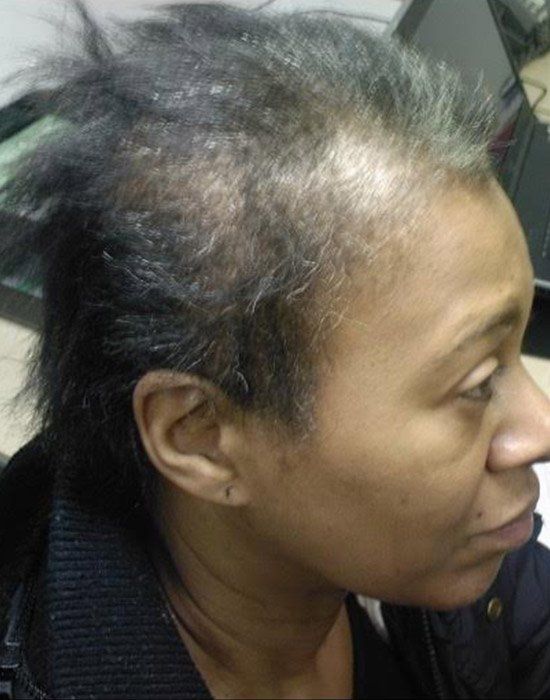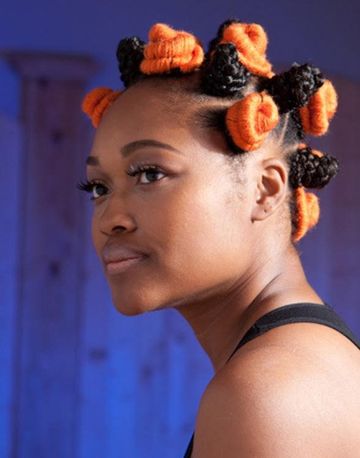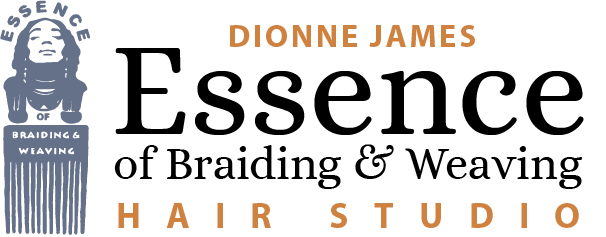We only accept CASH or Zelle
For all after hours appointments (after 6 pm) or on the stylist days off: there is an additional $100.00 fee on top of the hairstyle cost.
We cannot guarantee stylist availability. She will let you know what day she’s available.
Please send your $100.00 after hour fee through cash app
$Essenceofbraiding, or use our phone number
404-736-4636.
Book an Appointment Today, call us at: (404) 736-4635 | essenceofbraiding@yahoo.com
Blog Layout
Protecting Natural Hairstyles

By Skywax Team
•
12 Oct, 2020
1. The Truth about Ammonia (It maybe necessary…) There are a lot of “ammonia free” products on the market promising a black to blonde result. Very Unlikely. Ammonia in products assist in the coloring process by opening cuticle and swelling the strands so that the color can penetrate to the cortex, yielding drastic color changes. Without ammonia, color change is mild and may require multiple applications to achieve desired color, if ever achieved. This is due to the fact that the color more likely will coat the strands as opposed to being absorbed into the strand because there isn’t a stimulant used to open the cuticle. Be aware of ammonia substitutes used such as the more popular ethanolamine, also known as monoethanolamine or MEA. These are equally, if not more, damaging to the hair. But because it isn’t “Ammonia” the company can advertise as “Ammonia free” (doesn’t necessarily mean safer), misleading many. 2. Bleaching Isn’t Necessary for Lighter Shades This is true (in most cases). Hair that hasn’t received ANY prior color (virgin hair) can be lifted with peroxide and color which is safer than bleach/lightener. Though safer than lifting with a lightener or bleach, one must know the condition of their hair prior to any chemical service. Adding chemicals (color) to damaged, weakened hair can be destructive. It is recommended, that prior to coloring, you should do weeks of deep conditioning treatments . Doing so will help fill holes in the strands, smoothing cuticle, as well as reinforcing moisture that color has been known to diminish. Please note: If henna based color has been used, achieving other shades will be hard without using a lightener. Using a lightener to lift even a few shades lighter can prove to be very traumatizing to the strands and should be avoiding if at all possible. There seems to be a color craze brewing and it’s causing many the urge to jump on the gun and color their natural hair without first knowing these important tips for preventing damage and dryness. But, then, while standing in the aisle of the beauty psupply store, you may become overwhelmed by the many coloring systems that claim to color hair without damage. What do you do? Do you go for it without research? No! When making the decision of coloring natural hair, there are a few important factors you must consider. 1. The Truth about Ammonia (It maybe necessary…) There are a lot of “ammonia free” products on the market promising a black to blonde result. Very Unlikely. Ammonia in products assist in the coloring process by opening cuticle and swelling the strands so that the color can penetrate to the cortex, yielding drastic color changes. Without ammonia, color change is mild and may require multiple applications to achieve desired color, if ever achieved. This is due to the fact that the color more likely will coat the strands as opposed to being absorbed into the strand because there isn’t a stimulant used to open the cuticle. Be aware of ammonia substitutes used such as the more popular ethanolamine, also known as monoethanolamine or MEA. These are equally, if not more, damaging to the hair. But because it isn’t “Ammonia” the company can advertise as “Ammonia free” (doesn’t necessarily mean safer), misleading many. 2. Bleaching Isn’t Necessary for Lighter Shades This is true (in most cases). Hair that hasn’t received ANY prior color (virgin hair) can be lifted with peroxide and color which is safer than bleach/lightener. Though safer than lifting with a lightener or bleach, one must know the condition of their hair prior to any chemical service. Adding chemicals (color) to damaged, weakened hair can be destructive. It is recommended, that prior to coloring, you should do weeks of deep conditioning treatments . Doing so will help fill holes in the strands, smoothing cuticle, as well as reinforcing moisture that color has been known to diminish. Please note: If henna based color has been used, achieving other shades will be hard without using a lightener. Using a lightener to lift even a few shades lighter can prove to be very traumatizing to the strands and should be avoiding if at all possible. 3. Refreshing Permanent Color without Over-Processing and Damaging Refreshing permanent color with permanent color is not necessary.When color seems to faded or grown dull, it’s possible to refresh without the use of permanent color. Nowadays, there are plenty of semi-permanent, even demi-permanent, and rinses that come in a vast array of colors. It’s safer and healthier for the hair to refresh with simple pigmented rinses, semi or demi-permanent colors. Doing so can act as a filler to the hair, making it softer and smoother than before. The constant overlapping of permanent color leads to hair being over-processed and eventually irreversible damage. 4. Color Care Lastly, and most importantly, after receiving a color service (whether done at home or a salon), it’s imperative that you adjust your regimen. Use of shampoo and conditioners for color treated hair is necessary and will help maintain proper pH levels, extend color life, and seal cuticle of hair. Implementing the proper products after a chemical color service will also combat loss of moisture and maintain health of the hair. In adjusting your regimen, you should consider moisturizing often (but not excessively), conditioning after every shampoo, and use cooler water temperatures when shampooing & rinsing (This helps close cuticle and extends life of color). Always, when in doubt, visit your local salon or stylist who specializes in the service you desire.

By Skywax Team
•
12 Oct, 2020
Detangling natural hair can literally make or break it. Especially when it comes to kinkier hair types, this is the area of your regimen which if you are not careful it will be harder to retain length. If you notice a whole bunch of tiny wispy hairs broken off after you detangle, with proper detangling you can cut down on the amount of breakage you experience. While you not be able to eradicate it completely as with manipulation of the hair does come with some form of breakage, you can drastically improve it. Step 1: Always detangle damp hair or hair moisturized with product. Dry hair is much too brittle to detangle without causing breakage and when your hair is soaking wet it is in its weakest state, making damp hair the perfect middle ground. If your hair dries up simply spray with water or a water based product. Spray Bottle Step 2: Section your hair into 4 to 6 sections. It is always best to work in sections rather than trying to attack your hair all at once. Sections will help you detangle more thoroughly and will make things easier. Use butterfly clamps to hold your hair in place. Step 3: Use a wide tooth comb and start from the ends of the hair. Comb starting from the ends of your hair working your way up. If you are use to wearing your hair straight this might sound weird but trust me with natural hair you will want to do it this way! Paddle brushes are also great, if you are looking for more stretch.

By Skywax Team
•
12 Oct, 2020
Did you know that 56 million people suffer from hair loss in the United States alone. When most people think of hair loss, they think of men. However, hair loss only affects 35 million men and 21 million of the 56 million are actually women. Hair loss can be caused by genetics, a side effect of many health conditions, or a reaction to certain medications. Below are some of the more common known causes for hair loss: ANDROGENETIC ALOPECIA Androgenetic Alopecia is a condition where genes and environment are thought to be factors that lead to a pattern of hair loss experienced by many women. ALOPECIA AREATA Alopecia Areata is an autoimmune condition in which hair is lost in round patches that can vary in size. Many times they are about the size of a nickel or quarter. Some people will have only a few patches of hair loss and in some there might be more extensive loss. ALOPECIA UNIVERSALIS Alopecia Universalis is a condition where there is loss of hair all over the body. Additional support in coping with the physical aspects of hair loss in regard to the the eyelashes and eyebrows may be helpful to you. ALOPECIA TOTALIS Alopecia totalis is a condition similar to alopecia areata, however there is total hair loss of the scalp hair. This condition is believed to be an autoimmune condition. There is an autoimmune response against the hair follicle. TEMPORARY HAIR LOSS FOLLOWING CHILDBIRTH In some cases there may be a temporary thinning of the hair several months following the birth of a child. LOW PROTEIN DIETS Eating a low protein diet for extended periods of time can possibly cause the temporary thinning or loss of hair due to the low protein levels. A diet rich in protein is necessary for healthy growth of hair. Usually this type of hair thinning and loss will be resolved when the proper diet is resumed. CHEMOTHERAPY TREATMENTS – SIDE EFFECTS OF MEDICATIONS Many times there are medications taken for various conditions that may possibly have a side effect of temporary hair loss while the medication is being taken. THYROID CONDITIONS In various thyroid conditions, a side effect can be hair loss. In Hyperthyroidism there is an excess of thyroid hormone in the blood stream that can cause an overactive thyroid condition. CHEMICAL TREATMENTS Sometimes there can be a severe reaction to various chemical treatments used when coloring or perming the hair. TRICHOTILLOMANIA Trichotillomania is a disorder that seems to be most common in females. It is thought to be a compulsive behavior where the person will pull out the hair on the head. My goal is to provide women with information, tools, and resources that will help you learn more about hair loss as well as find and make wise choices regarding the type of wigs that are available on the market today.
Certified Woman, minority owned business.




